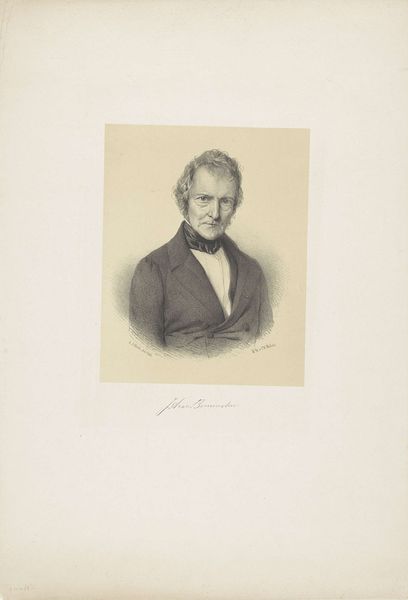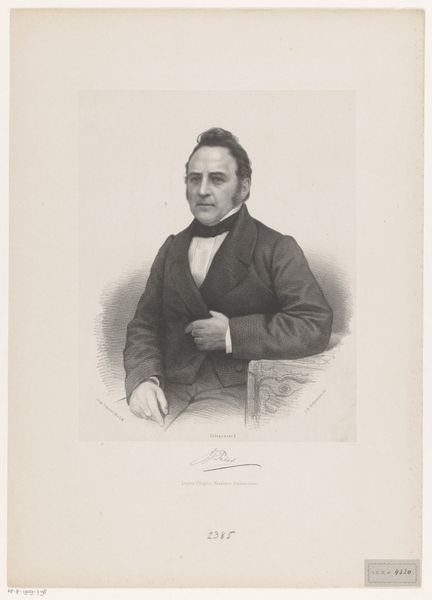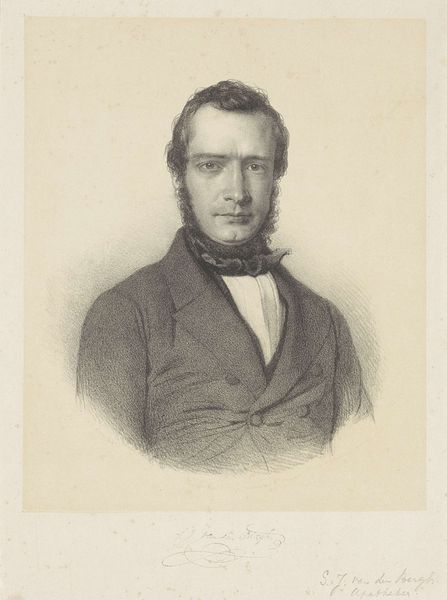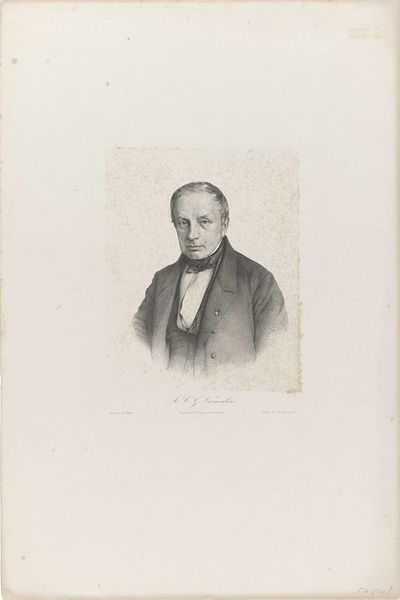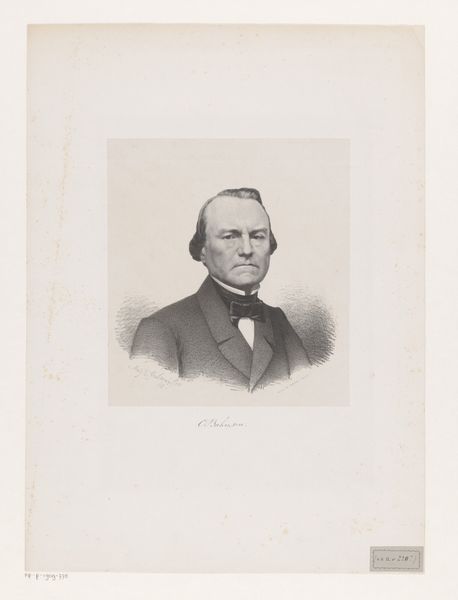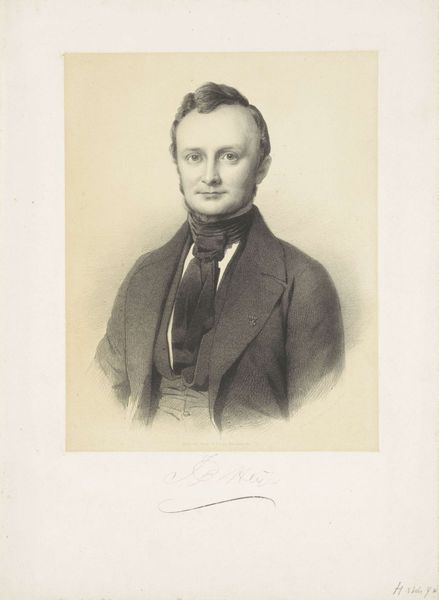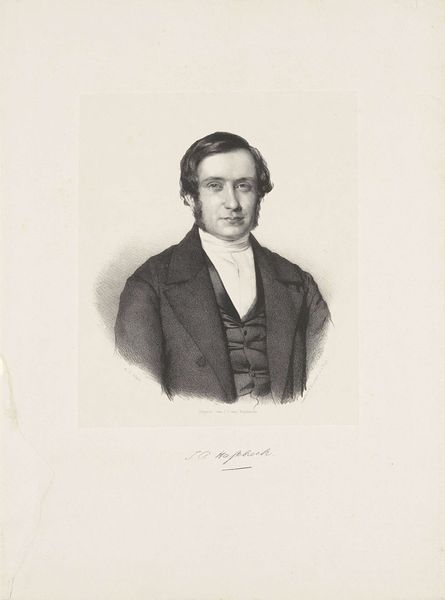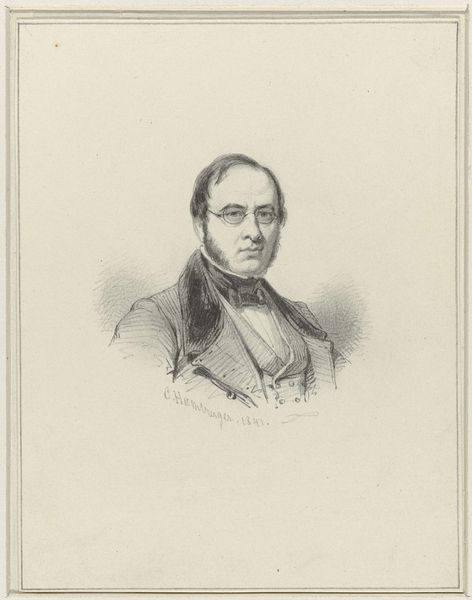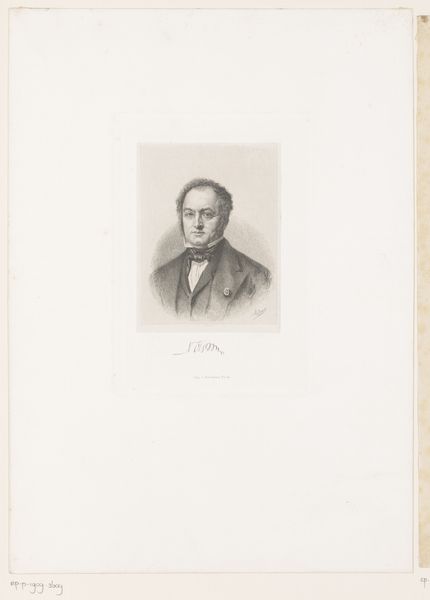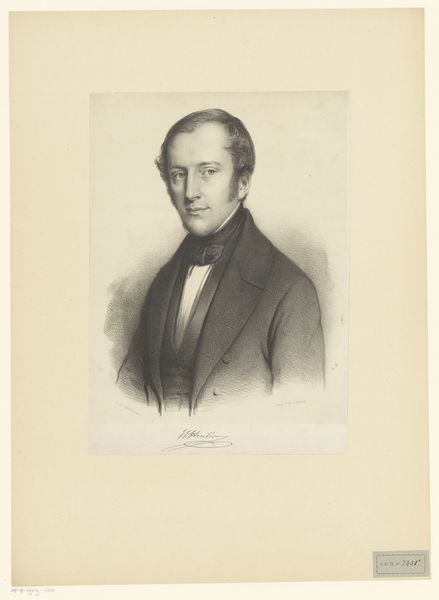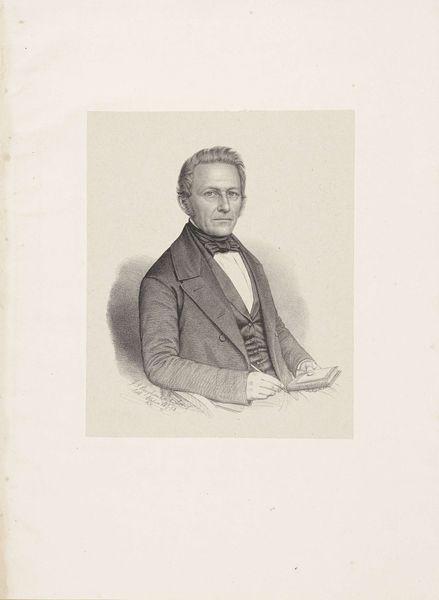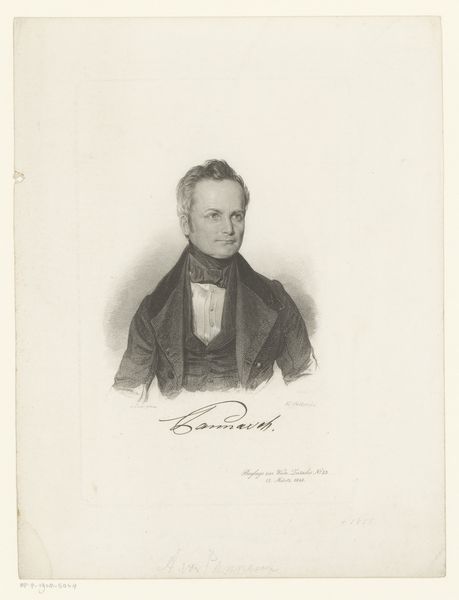
drawing, print, graphite, engraving
#
portrait
#
pencil drawn
#
drawing
# print
#
historical photography
#
pencil drawing
#
graphite
#
portrait drawing
#
academic-art
#
engraving
#
realism
Dimensions: height 365 mm, width 275 mm
Copyright: Rijks Museum: Open Domain
Curator: This is a portrait of Carel Godfried Withuys, rendered between 1847 and 1883 by Adrianus Johannes Ehnle. The piece, currently held at the Rijksmuseum, is primarily composed of graphite in an engraving, lending a striking visual texture. Editor: It has a certain…reserve. The subject's gaze is direct, but there’s also a stiffness in his posture and expression. The engraving, in particular, conveys a certain austerity that complements the serious mien of Mr. Withuys. Curator: Indeed. The realism achieved is characteristic of the period, and portraits such as this were often commissioned by individuals to solidify their place within society or the public sphere. The clothing too, very consciously conveys his status, you could argue, as it denotes middle-class sensibilities, the emergent political power within this period. Editor: Precisely! Consider the means of production – the graphite, the engraving process. Each stroke, each line, carefully etched, speaks of deliberate craftsmanship. This wasn't a quick sketch; this was a statement, manufactured to project a specific identity. What does that materiality tell us? This piece underscores a shift away from individualized art-making to broader processes. Curator: Agreed, and it is essential to consider who Mr. Withuys was. Without further biographical context, we could be missing some important narrative components regarding who he wanted to be and how that fits into the role that portraits like these play as objects that denote wealth, status, and even political allegiance during a time of emerging national identities. Editor: Looking at it again, I'm also struck by how this portrait democratized the dissemination of image. Prior, you were reserved for oils that not everyone could obtain. As you can create more graphite materials, then images such as this became something that were able to have in society for a reasonable price, changing consumption forever. Curator: It highlights that art serves not only as decoration but also as historical documents; visual articulations of class, politics, and social values. Each viewing is an invitation to understand what those dynamics were at the time. Editor: Absolutely, a reminder to consider art as the material reflection of larger shifts in production and labor.
Comments
No comments
Be the first to comment and join the conversation on the ultimate creative platform.
